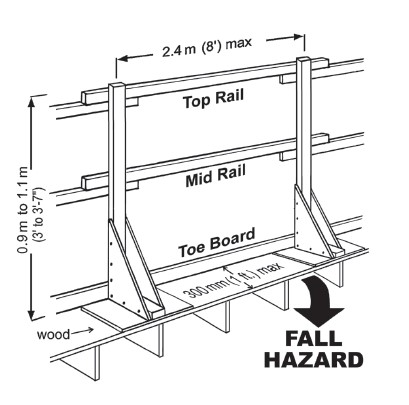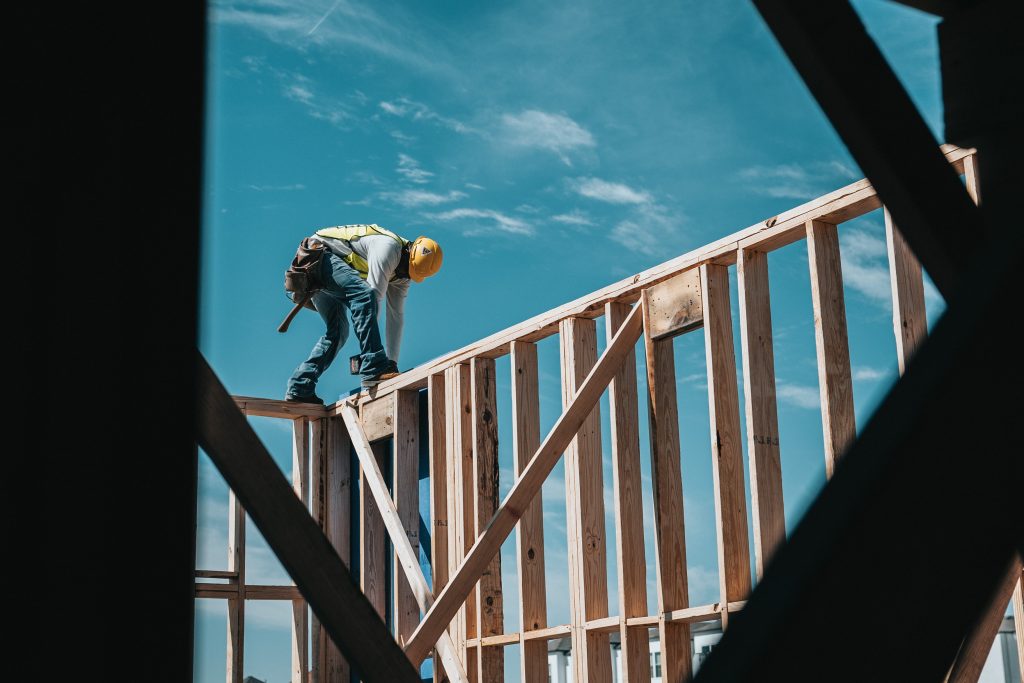Working at Heights – Guardrails
Working at Heights – Guardrails
Explain dangers
Falls are the number one cause of critical injuries and deaths of Ontario workers on construction sites. All workers must be protected from a fall hazard.
Identify controls
Guardrails are often the best and most convenient means of fall protection.
Where possible, guardrails must be installed
• Along the open edges of roofs and floors
• On formwork, scaffolds, and other work surfaces
• Around openings in floors, roofs, and around skylights
• Wherever workers are exposed to the risk of falling.
Guardrails must be installed no more than 30 cm (1 ft) from an open edge.
They must be high enough and strong enough to resist the force of workers bumping into or backing up against them. They must also be
able to withstand the loads specified in the Construction Projects regulation (O. Reg. 213/91, s. 26.3(5)).
A typical wooden guardrail system must have:
• A top rail, mid rail, and toeboard secured to vertical supports
• A top rail between 0.9 m (3 ft) and 1.1 m (3 ft 7 in) high
• A toeboard installed flush with the surface and at least 89 mm (3 1/2 in) high (or 100 mm (4 in) high if not made of wood)
• Posts no more than 2.4 m (8 ft) apart.
Wire rope and manufactured systems of metal frames and wire mesh can also be used as guardrails if they are as strong and durable as wooden guardrails.
Well-anchored posts are essential. You can use vertical shoring jacks, screw-clamp posts, clamp binding posts, or posts that fit into sleeves cast right in the slab.

All guardrails—especially wooden ones—should be inspected regularly.
Sometimes guardrails have to be removed to land material or make installations along floor or roof edges. In those cases, the open edge should be roped off and marked with warning signs. Workers who go inside the roped-off area must wear fall protection and be tied off.
Although guardrails are the best method of protecting workers around floor and roof openings, they may not always be practical. You
may have to use a protective cover.
Protective covers are made of planks, plywood, or steel plate and are securely fastened over the opening. They must be strong enough to support any weight reasonably expected to be placed on them.
In some cases, workers have removed covers from openings and then fallen through. To prevent this, covers should be clearly marked in bright paint with warning signs such as: DANGER! DO NOT REMOVE! DO NOT LOAD!
Demonstrate
Review the types of guardrails used on site. Ask your workers where else guardrails should be installed.
Join our Working at heights training program to get certified.

